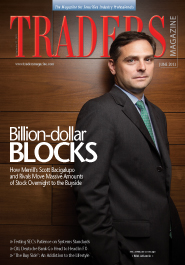Overnight block trading has surged on Wall Street, reaching almost $60 billion in the last 12 months, nearly two and a half times the amount totaled in the year-earlier period of $24.3 billion, according to data from Thomson Reuters.

For banks, profits can run around 2.3 percent of the value of each block, which range from $250 million to more than $1.5 billion each, said Jay R. Ritter, professor of finance at the University of Florida. Although this quick profit—$23 million on a $1 billion deal—is about half of what an investment bank would make by taking the issuer on the traditional path of marketing a stock offering through a weeks-long road show and book-building, it is the issuer that is driving the surge in overnight block deals.
Overnight trading is also expanding the role investment banks play in providing liquidity to these issuers. These overnight block deals have the investment banks bridging the issuers’ need for cash and the markets themselves, which might have difficulty digesting such a large block of stock if it were sold on the open market. The largest investment banks do this because they can and because it is profitable, even as it heightens the chances that an investment bank or two might get caught in the middle, if buyers cannot be lined up for the repurchase of slices of the block, or if a market event or company event happens overnight and sours investor interest.
“The overnight block trading business really exploded in early 2012, and it’s sustained itself into early 2013,” said Kevin Russell, global head of cash equity trading at Citigroup. “And it’s a trend that we think is a secular change in how both financial sponsors and corporations are going to issue equity.”
To read the full article please click here.



